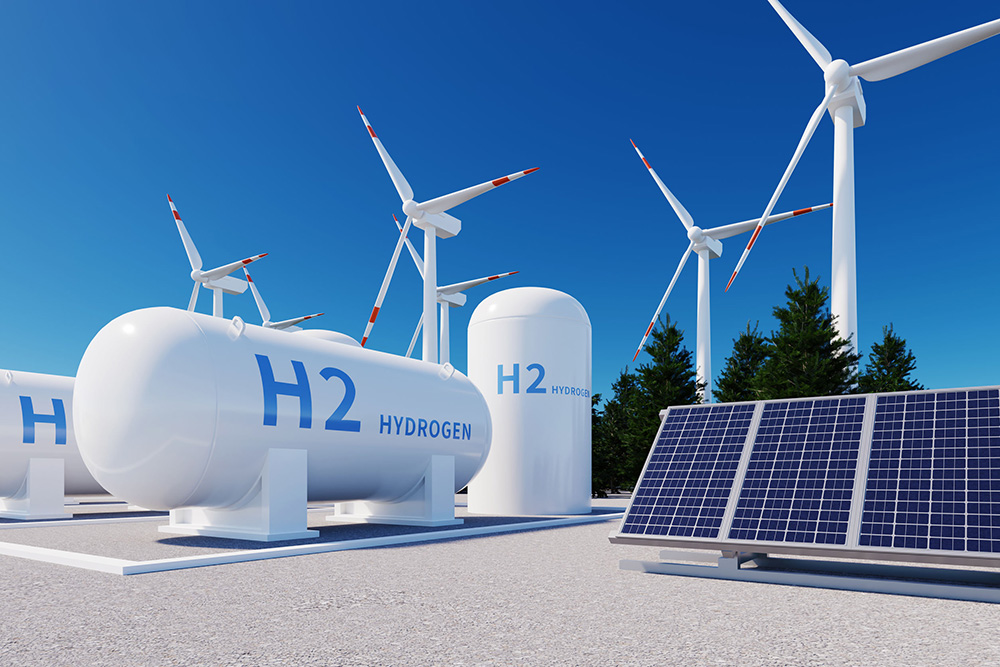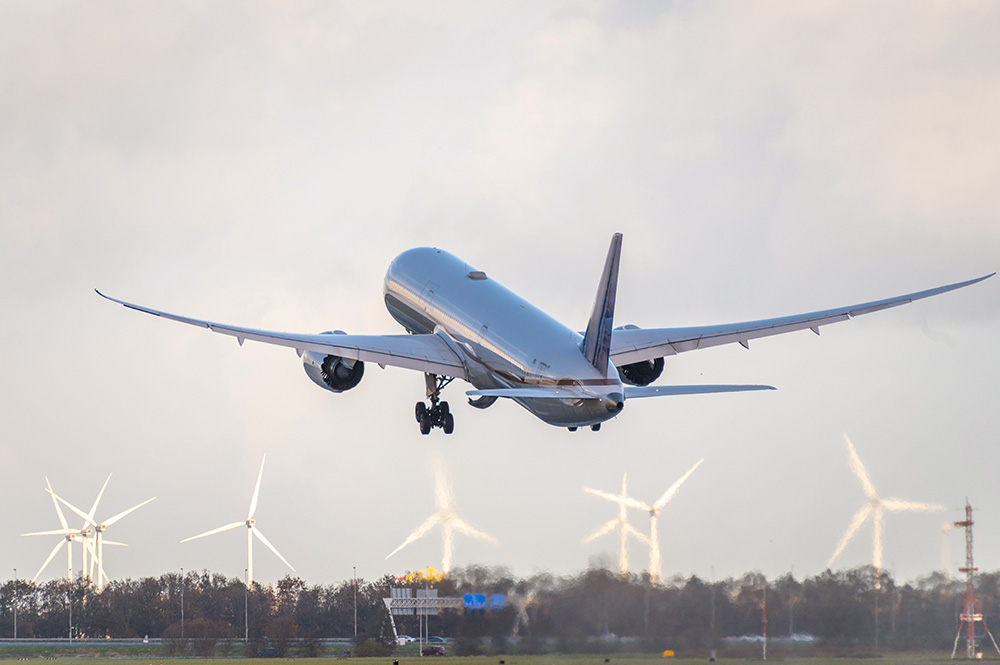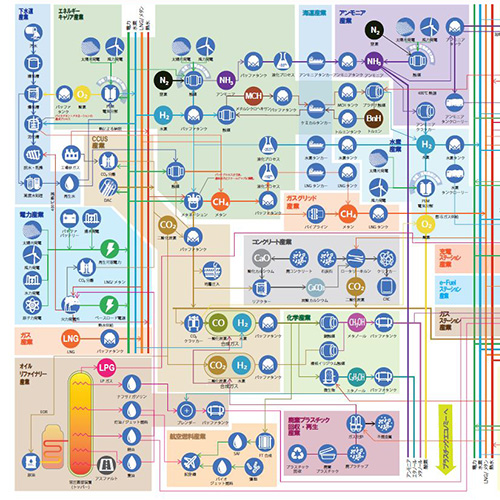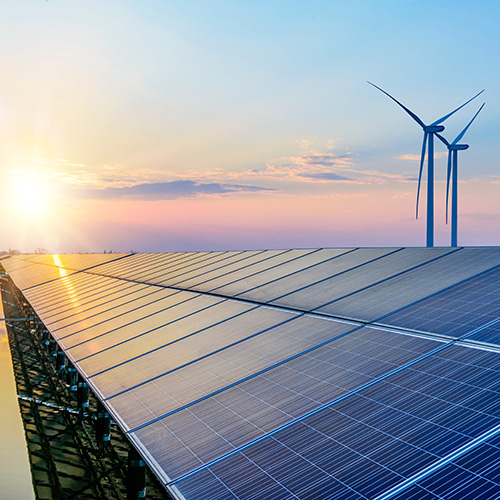
Carbon Neutrality, a Challenge That Transcends Industrial Boundaries
The World Meteorological Organization (WMO) has announced that 2023 was the warmest year on record, with the average global temperature rising to 1.45℃ above pre-industrial levels. There is the possibility that temperatures will continue to rise, and the concern is that this will have a serious impact on the environment, leading to changes such as rising sea levels, abnormal weather, and a decline in biodiversity. Despite the establishment of an international framework and efforts by countries around the world to address this crisis, the search continues for effective solutions. The Global Stocktake*1, an assessment presented at the 28th Conference of the Parties to the United Nations Framework Convention on Climate Change (COP28), found that a large gap exists between the current trajectory of global emissions and the emissions reductions that would be necessary to achieve the goal set out in the 2015 Paris Agreement of holding the global average temperature increase to well under 2℃ while striving to limit this increase to no more than 1.5℃. Faced with the reality that it will be difficult to achieve this target if things continue as they are, highly effective actions are now required that transcend national and industrial boundaries.
The cause of global warming: energy imbalance
― Aiming for "virtually zero" carbon dioxide emissions on a global scale
The primary cause of global warming is said to be the increase of carbon dioxide (CO2) and other greenhouse gases in the atmosphere.
The Earth is warmed by the radiant energy of sunlight and cooled by the radiation of this heat back into space. The balance of this energy flow in and out keeps the surface temperature of the earth at a constant level. Greenhouse gases absorb some of the heat radiated from the earth and inhibit its release into space. If there were no greenhouse gases and all heat was released into space, the average temperature of the earth would drop below freezing, making the planet uninhabitable. However, if there is too much of this gas, the heat will stay on Earth and, as a result, temperatures on the Earth's surface will rise.
Since the Industrial Revolution, people have relied on the burning of fossil fuels such as coal and oil to obtain energy. This has led to a sharp increase in CO2 emissions, and the concentration of CO2 in the atmosphere is now about 50% higher than in pre-industrial times*2, contributing to global warming. With the recognition of the dangers that global warming poses to the environment, countries around the world have begun to take action to combat climate change. People everywhere are making changes in their economic activities and lifestyles to reduce CO2 emissions and achieve carbon neutrality, and thereby limit the rise in global temperatures.
Carbon neutrality is achieved when the absorption of CO2 by forests and plants balances out the emissions of greenhouse gases such as CO2, methane, and nitrogen oxides that are generated through human activities. Currently, the focus of efforts toward carbon neutrality is to move away from fossil fuels and promote the use of renewable energy. However, there are a number of obstacles to replacing fossil fuels―which are widely used today because they are easier to transport, store, and process―with energy sources that do not emit CO2.
For example, it is difficult to ensure a stable supply of solar and wind power because the amount of electricity that is generated fluctuates depending on seasonal variations in weather and the time of day. The use of batteries as a storage medium has been considered, but the lithium-ion batteries (LIBs) that are most widely used today present concerns such as the risk of fire*3. The use of hydrogen as an energy carrier*4 is challenging due to the difficulties of storing this element when in a gaseous state. Because of its small molecular size, it occupies a much larger volume than other gases and tends to leak through gaps and seals. While the liquefaction of hydrogen by lowering its temperature to -253℃ enables high-capacity storage, this process requires the use of other energy sources. Therefore, to replace fossil fuels with renewable energy, it is necessary to take a broad perspective when exploring solutions such as considering the energy carrier to use in combination with the renewable energy.
Furthermore, there are other complex issues that cannot be resolved if one simply considers them from an energy perspective. For example, one of the principal uses of ammonia, which is showing great promise as a new energy carrier that does not emit CO2 when burned, is as a feedstock for the production of chemical fertilizers. Increasing demand for ammonia as an energy source could conflict with its use in the production of chemical fertilizer. In other words, when looking to achieve carbon neutrality on a global scale, it is not enough to just focus on promoting the use of renewable energy. An approach must be taken that looks for optimal overall solutions.
In light of these circumstances, Yokogawa believes that an optimal combination of a broad range of methods and technologies for the transport and storage of energy and the generation of heat and electricity must be found, and that this will depend on the region, environment, and application. And by linking closely related elements such as energy, water, and food, we are working to find comprehensive solutions that take into consideration factors such as the need to change people's behavioral patterns.

Organic integration of individually optimized domains
― Taking a bird’s eye view when exploring new energy systems
Companies in a variety of industries have made tremendous efforts to reduce CO2 emissions at their plants by such means as installing solar panels, adopting the use of alternative fuels and materials that emit less CO2, and using energy-efficient lighting and equipment. While these efforts have undoubtedly helped to protect the environment, some have described them as being akin to “wringing a dry rag,” and we will still be far from achieving our goals in combating climate change if we limit ourselves to these conventional approaches. We need to try entirely new things and pick up the pace of our efforts to make the world a better place.
Due to this, in recent years the concept of “industrial symbiosis,” in which various industries and companies aim to achieve sustainable business activities by cooperating and coexisting while making use of each other's assets, has been attracting attention. Yokogawa advocates an energy system convergence concept based on which energy systems and material supply chains that have conventionally been optimized by company or group are interconnected and organically integrated. We believe that taking a larger perspective that seeks to transcend boundaries between companies and industries as we restructure energy systems will allow us to further reduce our impact on the environment.
With this in mind, Yokogawa is exploring possibilities for industrial symbiosis in which there will be a deepening cooperation between companies and industries. In line with this effort, we have started a circular economy initiative to reuse plant CO2 emissions. For example, we are working with a major Polish energy company that wishes to produce synthetic aviation fuel from carbon dioxide and green hydrogen, using CO2 emissions from power plants, cement factories, and steel mills, and hydrogen produced by an electrolysis process that makes use of renewable energy. Based on Yokogawa's digital twin technology, detailed and accurate models are being used to simulate and fine tune manufacturing processes and thereby select the most economically viable and environmentally sustainable synthesis methods. In addition to significantly reducing industrial emissions of greenhouse gases, the synthetic fuel to be produced will be used not only in the aviation industry but also in other industrial sectors, since its performance is comparable to that of conventional petroleum-based fuels and can be applied to existing storage and transportation infrastructure and vehicles.

We are also using software to optimize power transmission and distribution and thereby realize a sharing economy in which electricity will be exchanged flexibly. By reading and analyzing power grid data that is collected 60 times per second and using machine learning technology to automatically control power generation and storage facilities at high speed, we are helping to maximize efficiency and productivity. One Australian power company is using this technology to maximize efficiency and productivity at a renewable energy generation facility, and it is expected that this will achieve a 55,000 gigajoule per year reduction in the use of natural gas and a 3,000 ton per year reduction in CO2 emissions. The contribution that this makes to the environment is equivalent to the effect of planting 1.25 million cedar trees to absorb CO2.
One example of inter-industry collaboration is an initiative at the Port of Rotterdam complex in the Netherlands. The participants each aim for a high degree of collaboration while maintaining confidentiality of information. Yokogawa is not a competitor to these companies, nor does it belong to any other corporate group, and is able to take advantage of this neutral position to optimize the supply and demand of electricity and heat, water, and industrial gases such as hydrogen and CO2, and to investigate ways in which more effective use of these resources can be made through enhanced collaboration. Preliminary studies have shown that optimizing the supply and demand for electricity and other resources among companies can reduce costs by 5%, and improvements of as much as 10% can be expected if this collaboration is longer in term and more in depth.
As set out in its long-term business framework, Yokogawa aims to provide value based on the system of systems (SoS) concept. According to this concept, independently operated and managed systems that work together are able to achieve purposes that cannot be accomplished by any one system functioning on its own. An example of this is linking factories, companies, supply chains, and social ecosystems by making use of our operational technology (OT) know-how, information technology (IT), and integration capabilities. By leveraging its power to connect, Yokogawa is committed to creating new value through holistic optimization and contributing to the realization of a carbon-neutral society.
The era of global warming has ended; the era of global boiling has arrived.
...It is still possible to limit global temperature rise to 1.5 degrees Celsius and avoid the very worst of climate change. But only with dramatic, immediate climate action.
- António Guterres, United Nations Secretary-General
References
*1 Global Stocktake (GST): A mechanism for evaluating global progress in meeting the greenhouse gas emission reduction targets (NDCs) set by each country and achieving the goals set out in the Paris Agreement.
*2 Japan Meteorological Agency: Annual Changes in Atmospheric Carbon Dioxide Concentrations and Annual Increases at Japan Meteorological Agency Observation Points (in Japanese) https://www.data.jma.go.jp/ghg/kanshi/ghgp/co2_trend.html
*3 Cabinet Secretariat: About Sectoral Investment Strategies (in Japanese) https://www.cas.go.jp/jp/seisaku/gx_jikkou_kaigi/senmonka_wg/dai3/siryou.pdf
Ministry of Economy, Trade and Industry: Storage Battery Industry Strategy (in Japanese)
https://www.meti.go.jp/policy/mono_info_service/joho/conference/battery_strategy/battery_saisyu_torimatome.pdf
*4 Substances that are used to store and transport energy. Specific examples include liquefied hydrogen, organic hydrate (MCH), ammonia, and synthetic methane.


